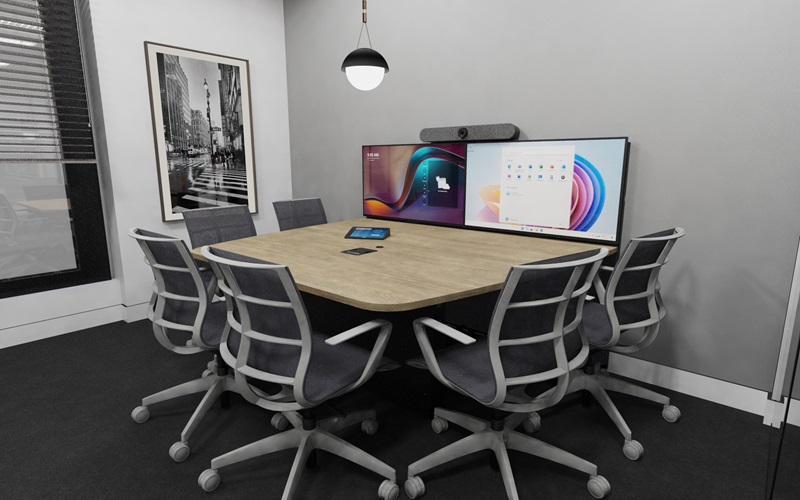For years, AV integrators have been overly focused on displays, microphones and control systems with little regard for the meeting rooms and furniture where the systems they are designing will be installed. That’s why despite our industry’s cutting-edge technology, meeting spaces remain frustratingly inconsistent. Users struggle with tangled cables, missing connections and unpredictable setups.
The problem? We’ve spent too much time perfecting the technology and too little time designing the space around it.
Generally speaking, meeting rooms, huddle spaces and collaboration areas aren’t built with AV in mind. Instead of integrating technology into the environment, we often force it into furniture designed for an analog world. The result? Meeting experiences that feel clunky, disconnected and far from seamless.
It’s time to stop treating AV furniture as an afterthought.
The Biggest Obstacle to AV: The Furniture Itself
Ask any integrator about the biggest challenges in meeting room installations and furniture will likely be high on the list. The reason? Most office furniture is designed for aesthetics and not for technology.
Traditional meeting tables and credenzas weren’t built to house AV systems. They don’t account for cable management, equipment ventilation or access to power and connectivity. This leads to a familiar set of problems:
- Cable sprawl: Exposed cables running across floors and tables create clutter and tripping hazards.
- Limited accessibility: Users hunt for HDMI or USB-C ports, often resorting to last-minute dongle solutions (and not all cables have the same capabilities).
- Inconsistent experiences: No two rooms function the same way, making troubleshooting a nightmare for IT.
- Retrofitting struggles: Every AV install becomes a custom job, requiring expensive modifications to furniture that wasn’t built for integration.
- Visibility and engagement issues: Traditional long rectangular tables make it difficult for users to see the displays, forcing them to roll back their chairs and compromising engagement.
- Unoptimized display positioning: Displays and cameras are often placed at inconsistent heights and angles, leading to poor viewing experiences and ineffective video calls. For an industry focused on seamless experiences, these challenges are a glaring weakness.
Why AV Furniture Needs a Rethink
If we want to create truly frictionless collaboration, we need to rethink how meeting spaces are built, not just the technology inside them.
The next generation of meeting space furniture must be designed with technology first — not as an add-on, but as a core feature. This means:
- Built-in connectivity: Tables and credenzas that discreetly house power, network and video connections.
- Standardization: Meeting rooms should function identically, eliminating user confusion.
- Modular design: Spaces should be easily upgradable without tearing everything apart.
- Sustainability: Future-proofed furniture that reduces waste and extends the lifecycle of meeting spaces.
- Thoughtful table design: Tables designed with a wider display end and a narrower far end to improve visibility and AI-enabled camera tracking.
- Consistent display positioning: Standardized mounting ensures displays and cameras are always placed at ergonomic, user-friendly heights across all rooms.
Technology is only as good as the space that supports it. The best meeting spaces aren’t just outfitted with great AV — they’re designed for it from the ground up.
The Future: Invisible Tech, Effortless Meetings
The end goal isn’t just better furniture. It’s better experiences. The next evolution of meeting spaces will be defined by:
- Hidden technology: No more exposed cables or clunky hardware.
- Plug-and-play simplicity: Rooms that just work every time.
- Adaptability: Spaces that evolve as technology changes.
- Scalability and repeatability: All rooms feel the same no matter how many they are and where they are in the world.
More than ever, AV is about the environment, not just the equipment. The companies and integrators that recognize this shift will be the ones leading the way — creating seamless, scalable and future-proofed meeting spaces that make technology disappear into the background.
It’s time to stop fighting against the room — and start designing for it.
Roger McArdell is chief technology officer and co-founder, Ashton Bentley by Kramer.

















